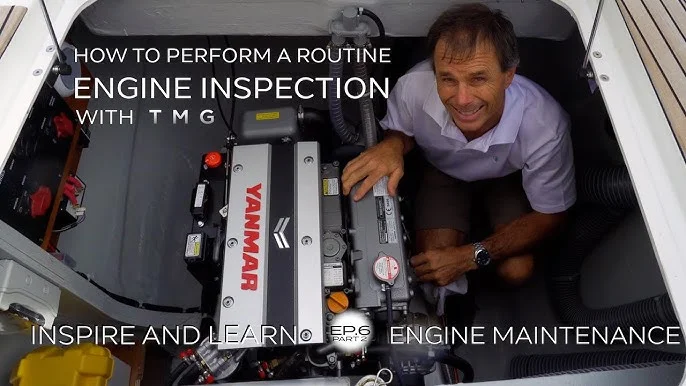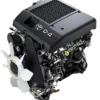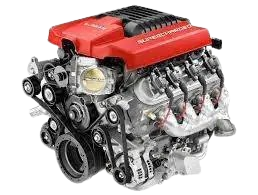Preparing for Long-Distance Voyages with the Yanmar 8LV370
Preparing for Long-Distance Voyages with the Yanmar 8LV370
Preparing for Long-Distance Voyages with the Yanmar 8LV370
When embarking on long-distance voyages, having a reliable and powerful engine is essential. The Yanmar 8LV370 inboard diesel engine is a popular choice among sailors and boaters, known for its efficiency, durability, and exceptional performance. However, thorough preparation is key to ensuring a safe and successful journey. This guide outlines essential steps to take when preparing for long-distance voyages with the Yanmar 8LV370, covering everything from engine checks to safety measures. Preparing for Long-Distance Voyages with the Yanmar 8LV370
1. Understanding Your Yanmar 8LV370
Before setting off, it’s crucial to familiarize yourself with the specifics of the Yanmar 8LV370. This engine features:
- Power: 370 horsepower
- Displacement: 8.2 liters
- Fuel Type: Ultra-low sulfur diesel (ULSD)
- Weight: Approximately 1,120 lbs
Understanding these specifications will help you determine fuel consumption rates, expected speed, and the overall performance of your vessel during long voyages.
2. Comprehensive Engine Inspection
2.1 Fluid Levels
Check and top off all essential fluids, including:
- Engine Oil: Ensure the oil is clean and at the proper level. Change the oil if it hasn’t been done recently.
- Coolant: Check the coolant level and condition. Replace if necessary to prevent overheating during extended use.
- Fuel: Ensure you have enough fuel for the journey and consider carrying extra fuel for emergencies.
2.2 Filters and Hoses
Inspect fuel and oil filters for any clogs or signs of wear. Replace filters as needed. Check hoses for leaks, cracks, or damage to prevent unexpected failures. Preparing for Long-Distance Voyages with the Yanmar 8LV370
2.3 Belts and Batteries
Inspect the engine belts for wear and ensure they are properly tensioned. Check the battery’s charge and connections, cleaning any corrosion to ensure reliable starts.
3. Preparing the Fuel System
3.1 Fuel Quality
Using high-quality fuel is essential for the Yanmar 8LV370. Ensure you have clean, fresh ultra-low sulfur diesel and consider using fuel additives to enhance performance and prevent microbial growth, especially if you plan to be at sea for extended periods. Preparing for Long-Distance Voyages with the Yanmar 8LV370
3.2 Fuel Tank Inspection
Inspect the fuel tank for any signs of contamination or leaks. Clean out any sediment that may have accumulated to ensure a smooth flow of fuel during your voyage.
4. Safety Equipment Check
Safety should always be a priority when preparing for long-distance voyages. Ensure you have the following:
- Life Jackets: Check that all life jackets are in good condition and accessible.
- Fire Extinguishers: Ensure fire extinguishers are charged and located in easily accessible areas.
- First Aid Kit: Stock a comprehensive first aid kit, ensuring it includes items specific to your needs.
- Emergency Beacons: Ensure you have functional emergency beacons or flares for distress signaling.
5. Navigation and Communication
5.1 Equipment Check
Test all navigation equipment, including GPS, radar, and charts. Ensure your maps are updated and relevant to your route.
5.2 Communication Systems
Check VHF radios and satellite communication devices to ensure they are operational. Having reliable communication is crucial for safety during long voyages. Preparing for Long-Distance Voyages with the Yanmar 8LV370
6. Provisions and Supplies
6.1 Food and Water
Plan for adequate food and water supplies for the duration of your journey. Consider non-perishable items that are easy to store and prepare. A general rule is to carry at least one gallon of water per person per day.
6.2 Spare Parts and Tools
Bring along spare parts, such as filters, belts, and hoses, along with essential tools for on-board repairs. Having the right tools can make a significant difference in addressing issues as they arise.
7. Weather Considerations
Before setting off, monitor weather forecasts for your intended route. Understanding weather patterns can help you avoid dangerous conditions. Always be prepared for unexpected weather changes, and have alternative routes planned. Preparing for Long-Distance Voyages with the Yanmar 8LV370
8. Test Run
8.1 Sea Trials
Before embarking on your long voyage, conduct a sea trial to test the engine’s performance and systems. This trial will help identify any potential issues and give you peace of mind regarding your preparations.
8.2 Performance Monitoring
During the trial, monitor fuel consumption, engine temperature, and overall performance to ensure everything is functioning optimally. Preparing for Long-Distance Voyages with the Yanmar 8LV370
9. Preparing for Emergencies
9.1 Emergency Procedures
Discuss emergency procedures with your crew, including man-overboard drills and emergency signaling. Make sure everyone knows their roles and responsibilities in case of an emergency.
9.2 Emergency Contacts
Maintain a list of emergency contacts, including local coast guard numbers and nearby ports, in case you need assistance during your voyage.
10. Conclusion
Preparing for long-distance voyages with the Yanmar 8LV370 involves thorough checks and proactive measures. By ensuring your engine is in top condition, your safety equipment is ready, and your navigation and communication systems are operational, you’ll enhance your chances of a successful and enjoyable journey. Proper preparation not only safeguards your crew and vessel but also ensures that you can fully enjoy the adventure that lies ahead. Happy sailing!
Installation Guide for the Yanmar 8LV370 Inboard Diesel Engine
Customer Reviews and Experiences with the Yanmar 8LV370 Inboard Diesel Engine
Best Applications for the Yanmar 8LV370 Inboard Diesel Engine
Ultimate Guide to Upgrading the Chevy LS3 6.2L V8 to 700+ HP
Unveiling the Power and Precision of Subaru Engines: A Comprehensive Guide








